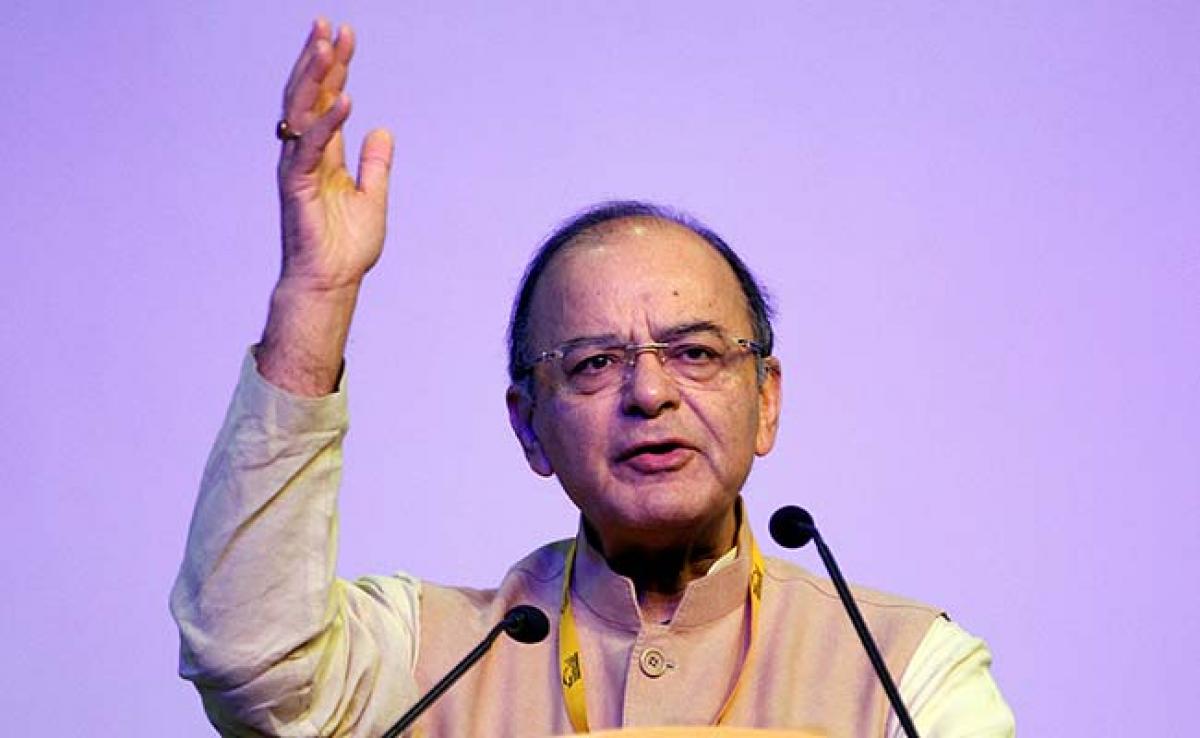Live
- Grand Celebration of MB Church Women’s Revival Conference The women of the MB Church
- Vemulawada Temple Development: Does the TG Endowments Minister want to write her own Agama Shastras for temples?
- Coop banks play key role in economic development
- TTD EO visits Sringeri Sarada Peetham
- Automobile loading using NMG rakes commences
- 555th Prakash Purab celebrated with gaiety
- Good news for Atmakur farmers
- High-risk aortic valve replacement surgery performed successfully
- HMWSSB MD holds review meeting on OTS-2024 scheme
- Dhobi Ghat assessed for potential to host sports complex
Just In

The latest official figures of GDP growth in India for the third quarter ended December do not accurately reflect the negative fallout of the ban on high value currency, the country\'s former chief statistician said on Wednesday.
The latest official figures of GDP growth in India for the third quarter ended December do not accurately reflect the negative fallout of the ban on high value currency, the country's former chief statistician said on Wednesday.
"My sense is that once the informal sector numbers come in next year, we would probably see that (growth rate) going below six and a half per cent," former Chief Statistician Pronab Sen told BTVi in an interview.
The Central Statistics Office (CSO) on Tuesday estimated that India's GDP for the third quarter ended December, at Rs 30.28 lakh crore, recorded a growth of 7 per cent, compared with 7.3 per cent in the previous quarter. The country had registered a Gross Domestic Product of Rs 28.31 lakh crore in the corresponding quarter of 2015-16.
The estimates of GDP growth for the full fiscal 2016-17 at 7.1 per cent marked a sharper fall from the 7.9 per cent recorded for the fiscal 2015-16.
Sen's reasoning, seconded by other economists, is that the latest GDP figures do not incorporate data on the informal sector that has borne the brunt of the demonetisation of Rs 500 and Rs 1,000 currency notes constituting 86 percent of cash in circulation. India's GDP captures economic activity in the formal sector, which constitutes just 10 per cent to 15 per cent of the economy.
According to Sen, the higher tax collections during November-December are explained by corporates paying excise on inventory they had sent out of factories and into retail outlets.
"There have been pre-payment of excise duty which is showing up in the difference between GDP and GVA (gross value added) growth," Sen said.
In terms of GVA -- considered a better measure of economic performance as it excludes product taxes and subsidies -- of Rs 28.02 lakh crore for the third quarter, the growth at 6.6 per cent was slower compared to 7 per cent in the previous year, mainly due to a contraction in the financial, real estate and construction sectors.
The inventory offloaded by manufacturers, however, did not get picked up at retail outlets as demonetisation pushed people to postpone purchases, as other private surveys have showed.
This is borne out by automobile sales data for the months of November and December, which record a fall.
"The GDP figures for the last quarter will probably reflect the disruption caused by demonetisation more accurately," Sen said.

© 2024 Hyderabad Media House Limited/The Hans India. All rights reserved. Powered by hocalwire.com







